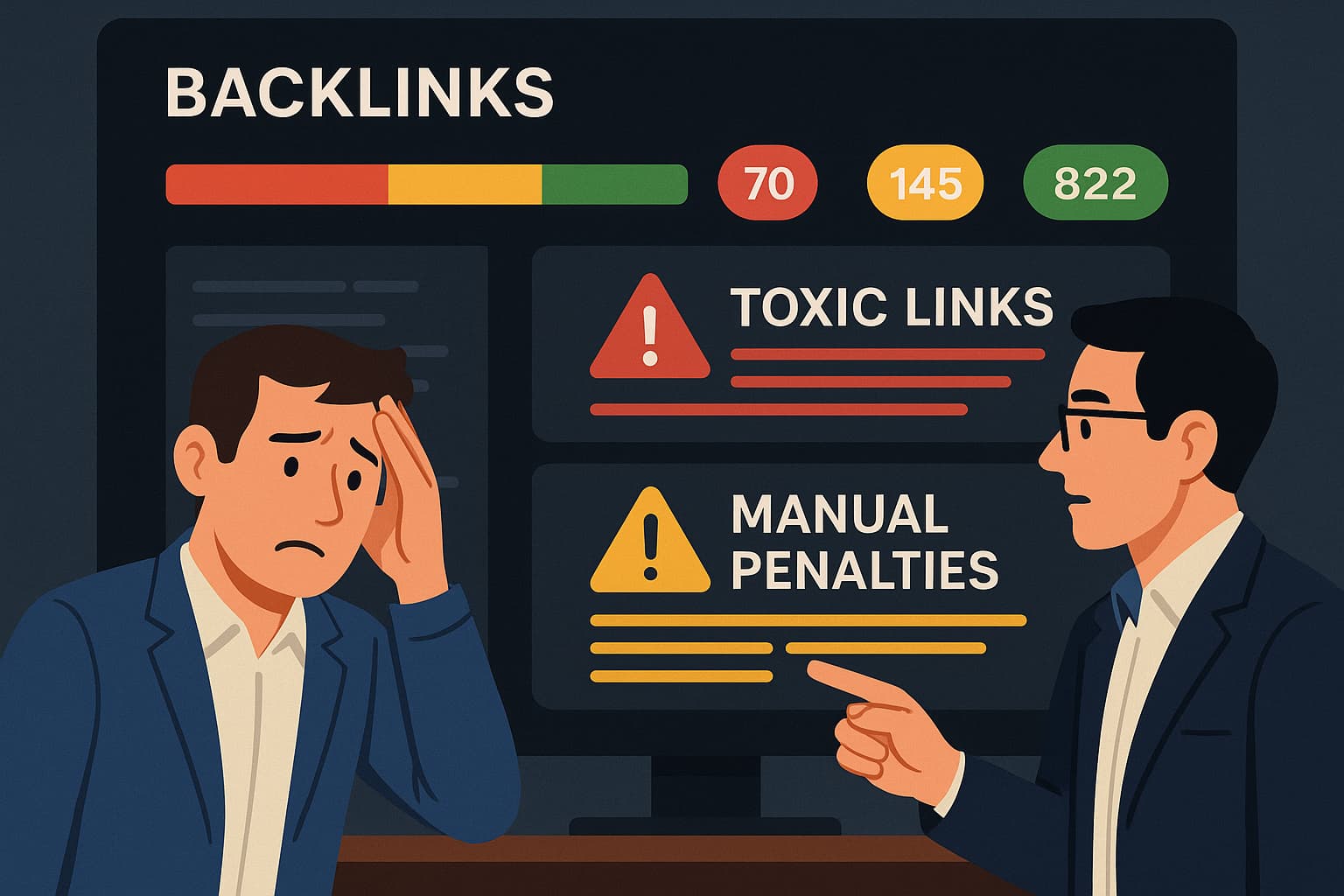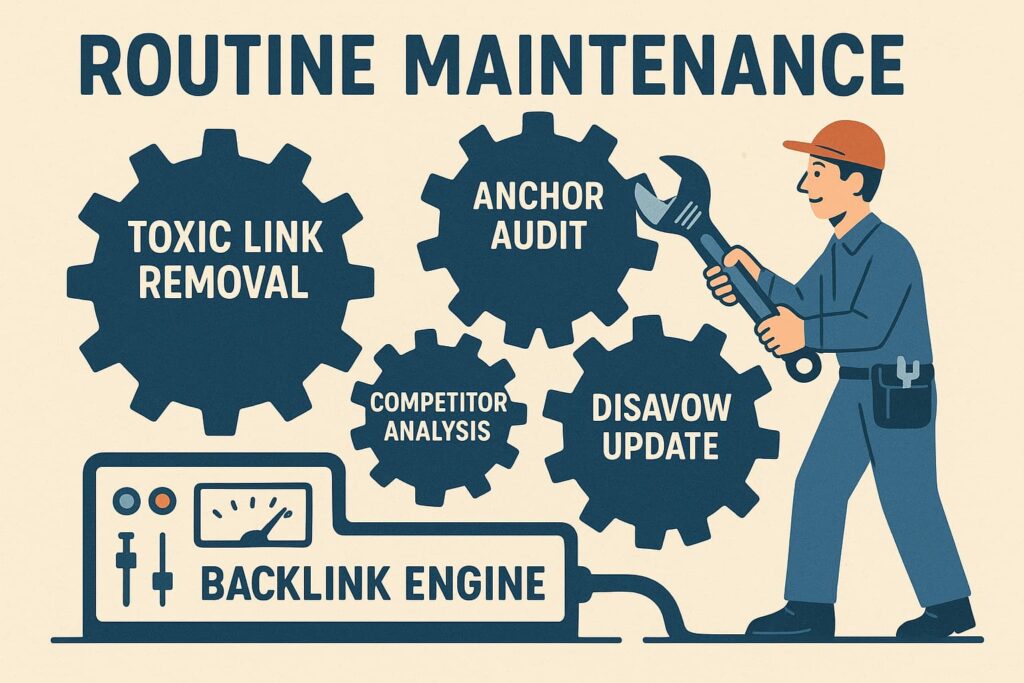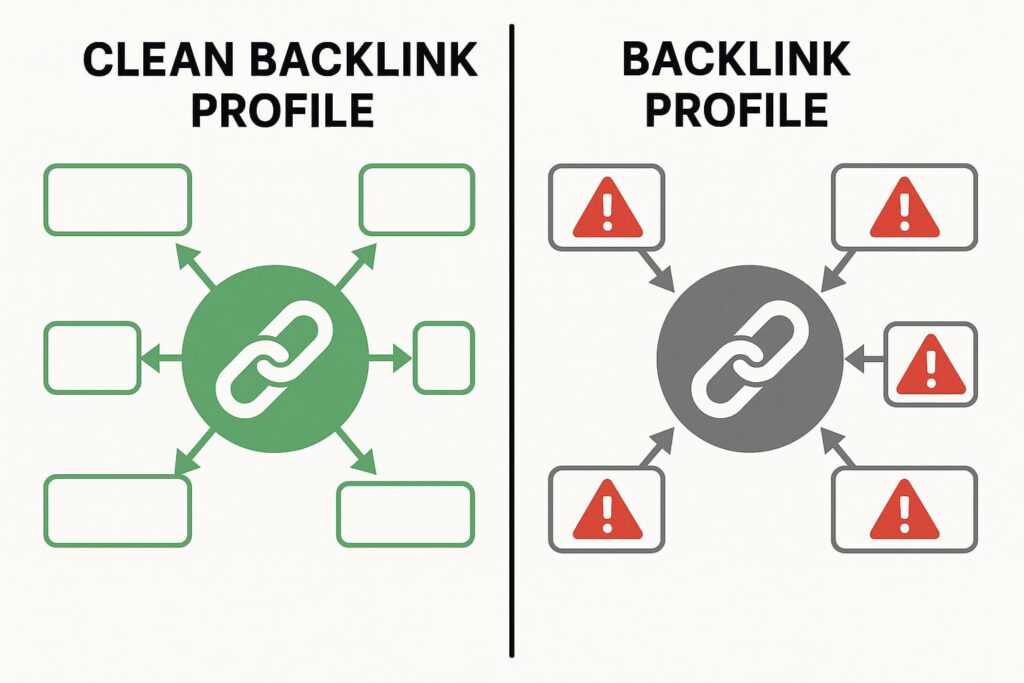
How Link Building Audit Services Uncover Hidden SEO Risks
Backlinks are a key part of SEO, but not all links help your rankings—some can do real harm. Toxic, low-quality, or outdated links can drag your site down in search results and even trigger Google penalties. Many site owners don’t realize they have these hidden issues until traffic drops or rankings slip.
That’s where a professional link-building audit comes in. It evaluates the quality of your backlinks, checks for spam signals, and uncovers missed opportunities your competitors are already using.
What Is a Link Building Audit?
A link building audit is a detailed analysis of a website’s backlink profile. It examines:
- The quality of referring domains;
- Anchor text distribution;
- Toxic or spammy links;
- Link sources (natural vs. manipulated);
- Competitor backlink comparisons.
The goal is to determine whether the backlinks are helping or hurting the site’s search rankings.
Hidden SEO Risks Uncovered by Link Building Audits
A common misconception suggests that more backlinks always lead to better rankings. However, poor-quality or harmful links can actually hurt search performance. Without regular audits, a site may develop a risky backlink profile, lose ground to competitors, or unintentionally violate search engine guidelines.
A professional link audit uncovers crucial SEO concerns, such as:
1. Toxic Backlinks
Links from spammy, irrelevant, or penalized sites can lead to Google penalties. These often come from link farms, PBNs, hacked websites, or unrelated sources. Even accidental acquisition can harm SEO by sending negative signals.
A detailed link audit detects these issues by reviewing domain authority, spam scores, and link patterns. Problematic links can then be removed through outreach or disavowed to protect rankings.
2. Anchor Text Overuse
Excessive exact-match anchor text can appear manipulative to search engines. Google’s algorithms look for natural anchor text distributions, typically consisting of:
- Brand names (30-40%)
- Naked URLs (20-30%)
- Generic terms like “click here” (10-20%)
- Partial-match keywords (10-20%)
An audit checks for unnatural patterns where exact-match anchors dominate the profile, which may indicate artificial link building. The report then provides corrective actions to rebalance the anchor text naturally.
3. Link Schemes and Paid Links
Websites that rely on artificial link-building tactics risk facing serious penalties from Google. These tactics go against search engine policies and include buying backlinks, overusing keyword-heavy guest posts, exchanging links excessively, or using automated software to create links.
Search engines can easily identify these artificial linking patterns through several telltale signs. These include abrupt surges in backlink acquisition rates and connections originating from known private blog networks or other low-quality sources. The algorithms are particularly adept at spotting these inorganic patterns.
A professional link audit helps identify these dangerous links before they impact your rankings. Catching them early allows for timely removal or disavowal, reducing the risk of penalties and avoiding the lengthy recovery process that often follows.
In short, the safest path to SEO growth is building high-quality backlinks naturally—quick fixes through paid or artificial links are more likely to hurt than help in the long run.
4. Broken or Lost Links
High-authority links that no longer work (due to deleted pages or domain changes) hurt SEO. These broken links waste link equity and miss ranking opportunities. Audits find these by checking:
- 404 errors in the backlink profile;
- Redirect chains that weaken link strength;
- Altered domain paths or structures.
After detection, site owners can act by restoring the missing pages, requesting updates to broken backlinks, or setting up accurate redirects to retain SEO benefits.
5. Competitor Link Gaps
A good link audit doesn’t just find problems — it reveals golden opportunities you’re missing. When you analyze your competitors’ backlinks, you’ll often discover respected websites that talk about them but haven’t linked to you yet.
This competitive analysis looks at three key areas:
- The types of content competitors are getting links for.
- Industry directories and resource pages where they’re listed.
- Trusted websites in your field that mention them.
Armed with this data, you can target link opportunities with a higher chance of success. These sites have already shown a willingness to link to businesses like yours, making outreach efforts more efficient and impactful.
Instead of relying on guesswork, you can build a focused, strategic link-building plan—one that prioritizes quality prospects already proven to support SEO growth.
How a Professional Link Audit Works

A professional link audit is a detailed, multi-stage procedure that includes technical examination and strategic evaluation. This detailed investigation goes well beyond merely running a backlink assessment, delivering practical information to help a website’s search performance. Here’s a detailed look at how each level progresses:
Step 1: Comprehensive Backlink Analysis
The audit starts by compiling every single link pointing to your website. Using professional SEO tools, specialists pull data from multiple sources to make sure nothing gets overlooked. But this isn’t just about counting links — it’s about evaluating their real value.
Each link gets checked for:
- The authority and reputation of the linking website.
- How closely the content relates to your business.
- Whether the source appears trustworthy.
- Any unusual patterns in how the links were acquired.
The team also looks at how your link profile has grown over time, watching for sudden spikes or other red flags that might suggest artificial link building.
Step 2: Toxic Link Identification
After compiling a complete backlink profile, the next step involves detecting potentially damaging links. This process carefully examines connections from suspicious sources such as link farms, private blog networks, or domains that search engines have penalized.
The evaluation considers multiple risk factors:
- Spam scores of linking domains
- Quality and relevance of the linking site’s own backlink profile
- Whether links originate from authoritative, industry-related sources
- Connections from questionable websites (gambling or adult sites)
- Links with obviously manipulative anchor text
This systematic review helps distinguish valuable backlinks from those that could negatively impact search rankings. Identifying problematic links early allows for timely corrective action before they affect a site’s search performance.
The process provides a clear understanding of which links support organic growth and which may require disavowal to maintain search visibility.
Step 3: Anchor Text Review
This analysis reveals whether a link profile looks natural or manipulated. By comparing branded, generic, and exact-match anchor text ratios against industry benchmarks, auditors can:
- Spot over-optimization risks
- Improve anchor text diversity
- Track historical patterns
The review helps avoid penalties while strengthening organic link profiles.
Step 4: Competitor Comparison
A complete link audit doesn’t stop at analyzing your own backlinks — it puts them in context by comparing them to your top competitors’ profiles. This side-by-side analysis reveals exactly where you’re falling behind and where opportunities exist.
The comparison focuses on three key areas:
- High-authority websites linking to competitors but not to your site;
- The specific types of content earning competitors valuable backlinks;
- Industry directories and resource pages where competitors appear.
This type of data allows you to focus your link-building efforts on established sources, boosting your chances of obtaining connections that truly contribute to improved search performance.
Step 5: Action Plan & Disavow File Creation
The last phase of the audit focuses on applying practical solutions based on the results. When dangerous links cannot be deleted directly via direct requests, a properly formatted disavow file is generated and submitted to Google. However, the most important conclusion is a clear strategy that covers both urgent adjustments and future link-building initiatives.
The action plan provides specific recommendations, including:
- Which toxic links to prioritize for removal
- Content improvements to attract organic backlinks
- Outreach methods for earning quality links from authoritative sites
- Procedures for ongoing backlink monitoring
This balanced approach solves current issues while establishing methods for sustainable link profile growth. The audit goes beyond simply identifying problems—it offers clear direction for improving search performance through legitimate, long-term strategies.
Why Regular Link Audits Are Necessary
A website’s backlink profile must be constantly monitored—it is not a “set it and forget it” part of SEO. Search engine algorithms change often, competitors modify their techniques, and once-valuable links might become troublesome over time. Regular link audits mitigate these dangers while keeping link-building activities successful.
1. Google Algorithm Updates Constantly Reshape Ranking Factors
Google’s algorithm changes constantly force SEO professionals to adapt. The rules about what makes a “good” backlink today might be completely different tomorrow. Countless websites get caught off guard when an update suddenly penalizes links that were perfectly acceptable just weeks before.
Google’s algorithm updates have played out repeatedly over the years. Remember when Penguin first cracked down on shady link schemes? That was just the beginning. Now, Google tweaks its ranking factors constantly—what counts as a quality link one month might be considered spam the next. The definition of “toxic” links keeps expanding as well.
Regular link audits are no longer optional. That backlink profile that helped a site rank last quarter could be working against it now. Many businesses only realize their links are problematic after traffic tanks—by then, the damage is done, and recovery takes months.
Google’s shifting criteria mean that “safe” connections from yesterday may now result in penalties. Proactive monitoring is the only way to keep up with algorithmic changes that might wreck rankings overnight.
Staying ahead means proactively checking your links before algorithms change, not after. It’s the only way to maintain your hard-won rankings in this constantly shifting landscape. Think of it like routine maintenance — skip it, and you’ll eventually pay the price when something breaks.
2. Negative SEO Attacks Are a Growing Threat
Some competitors use unethical tactics to hurt rival websites’ search rankings. These negative SEO attacks typically involve:
- Creating large numbers of spam links from low-quality sites.
- Building backlinks from domains that Google has already penalized.
- Using obvious, unnatural anchor text patterns.
These fake links can appear quickly, potentially triggering Google’s automatic penalties before the targeted website owner notices.
Regular link audits help detect these attacks early by identifying sudden increases in suspicious links. When found quickly, these harmful links can be disavowed to minimize ranking damage.
For businesses in competitive industries, these audits provide necessary protection against malicious competitors trying to game the system. Without monitoring, websites risk discovering these attacks only after their rankings have suffered.
3. Link Decay Can Undermine Your Hard-Earned Authority
Even legitimate, high-quality backlinks aren’t guaranteed to maintain their value indefinitely. Several factors can cause link decay:
- Domain changes: A previously authoritative site might sell its domain to spammers.
- Penalties: Linking sites can get penalized, dragging down your site by association.
- Content removal: Valuable resource pages that linked to you might get deleted.
- Redirect chains: Multiple redirects can dilute link equity over time.
An annual audit might miss these gradual deteriorations. More frequent monitoring ensures you can:
- Update or replace broken high-value links;
- Disavow newly toxic connections;
- Maintain relationships with linking domains;
- Preserve your site’s overall authority.
Choosing a Reliable Link Audit Service

Not all link audits deliver the same quality. Many services use fully automated tools that simply scan your backlinks without proper human analysis. These reports often miss critical issues or flag false positives, leaving you with incomplete or misleading data.
A truly valuable audit combines technology with expert review. Look for a provider that:
- Performs manual verification of suspicious or high-value links.
- Explains their methodology so you understand their findings.
- Provides prioritized recommendations — not just raw data, but clear next steps.
- Differentiates between minor issues and real risks to focus your efforts.
Although low-cost, automated audits may save money at first, they often end up costing more because they fail to detect damaging connections or significant possibilities. The correct service enables you to effectively clear up dangers while finding your greatest link-building opportunities, saving you time and safeguarding your rankings.
Before making a decision, ask whether they will simply offer you a spreadsheet or assist you in understanding and resolving issues. The difference is important.
For example, 3XE Digital provides in-depth link audits and backlink removal services. Their process includes a deep scan of a site’s backlink profile, quality assessment, anchor text analysis, and competitive gap comparisons. They also handle toxic link removal through manual outreach and disavow file creation. Their approach ensures clients understand the findings and know how to act on them.
Conclusion
A link-building audit isn’t a one-time task—it’s essential for maintaining strong SEO. It uncovers harmful backlinks, detects risky anchor text patterns, and highlights areas where competitors may be ahead. These insights help you fix issues and improve your link strategy.
Neglecting backlink problems can lead to penalties. Regular audits keep your site aligned with search engine rules and support long-term visibility through quality links.